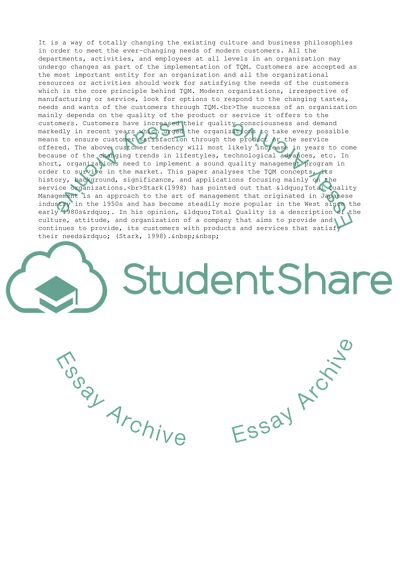Cite this document
(Total Quality Management (TQM) in Service Organizations Research Paper, n.d.)
Total Quality Management (TQM) in Service Organizations Research Paper. Retrieved from https://studentshare.org/management/1742626-total-quality-management-tqm-in-service-organizations
Total Quality Management (TQM) in Service Organizations Research Paper. Retrieved from https://studentshare.org/management/1742626-total-quality-management-tqm-in-service-organizations
(Total Quality Management (TQM) in Service Organizations Research Paper)
Total Quality Management (TQM) in Service Organizations Research Paper. https://studentshare.org/management/1742626-total-quality-management-tqm-in-service-organizations.
Total Quality Management (TQM) in Service Organizations Research Paper. https://studentshare.org/management/1742626-total-quality-management-tqm-in-service-organizations.
“Total Quality Management (TQM) in Service Organizations Research Paper”, n.d. https://studentshare.org/management/1742626-total-quality-management-tqm-in-service-organizations.


